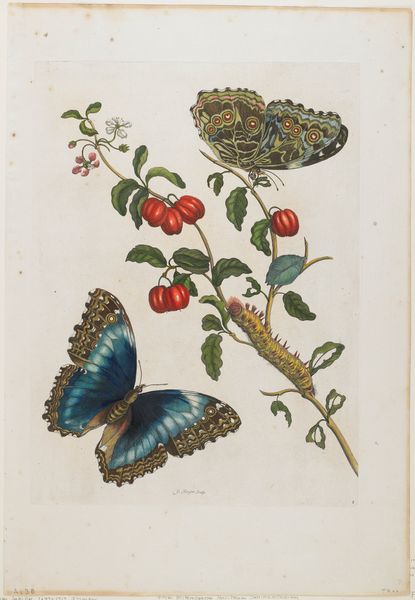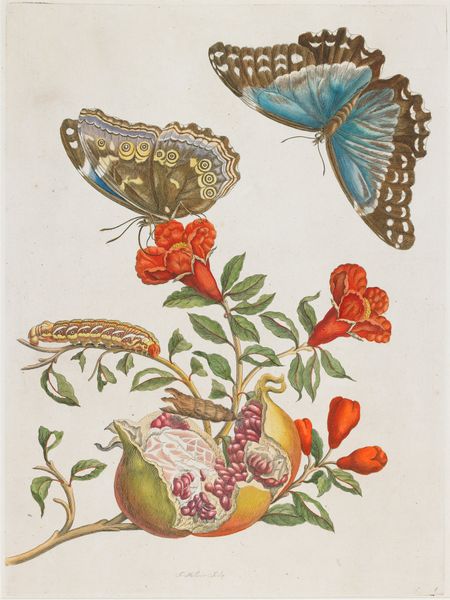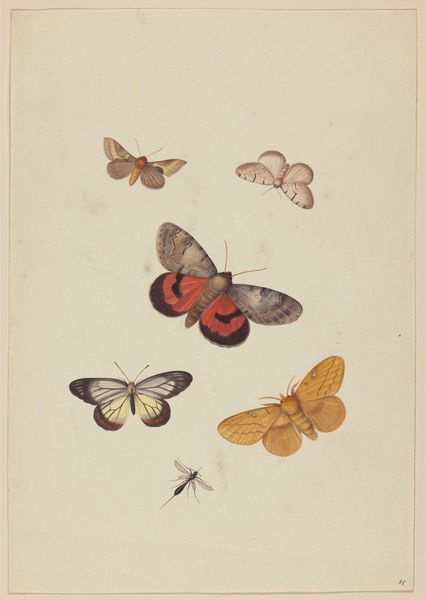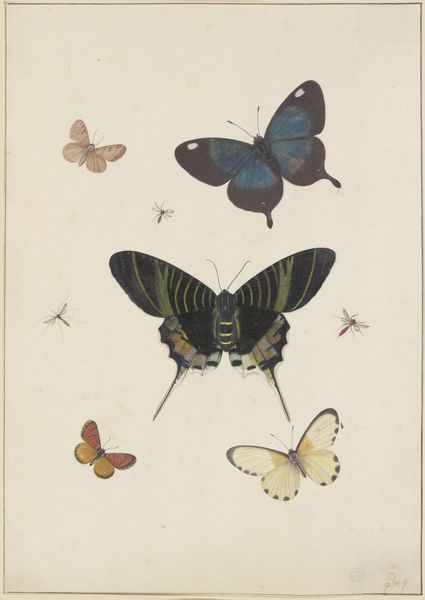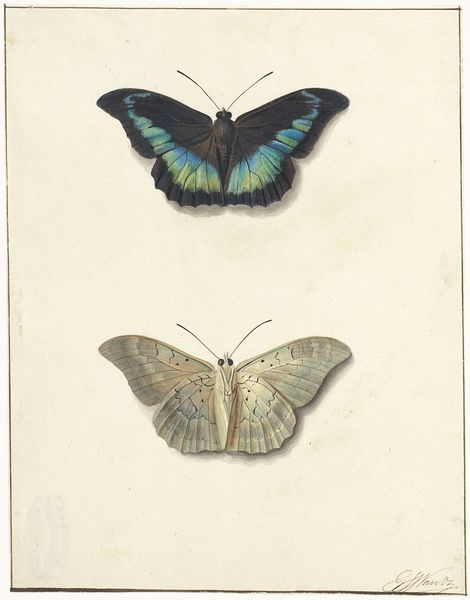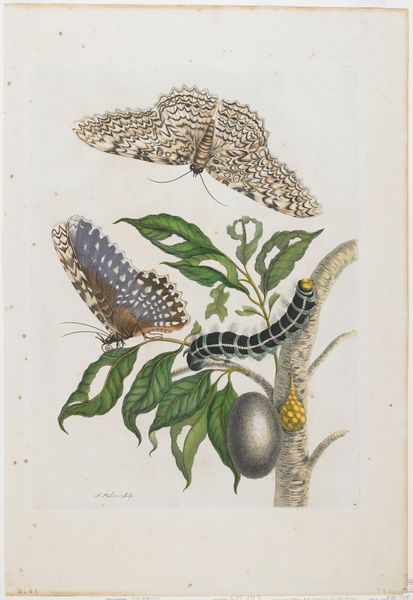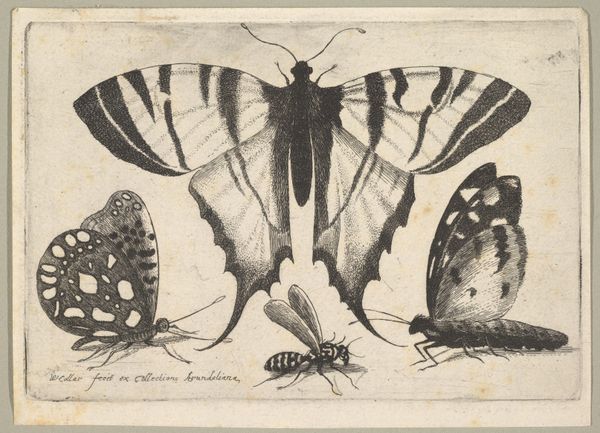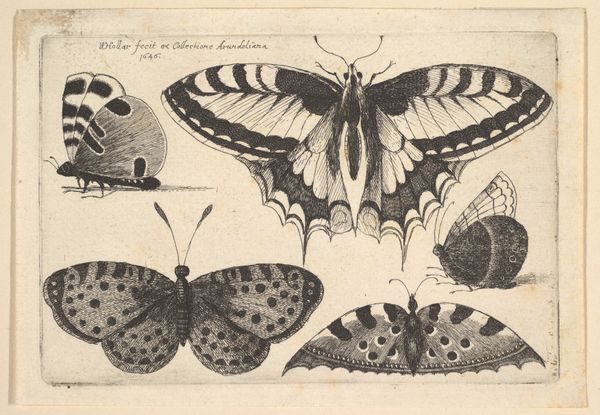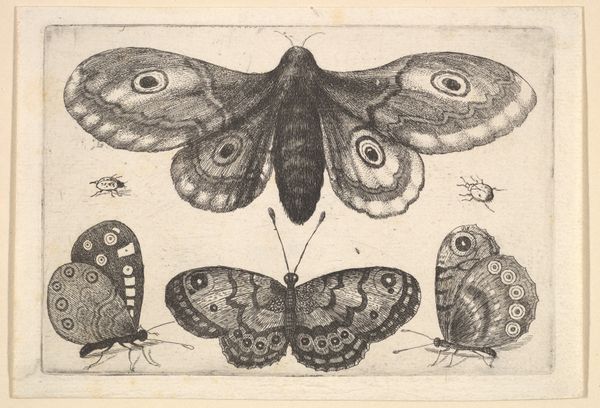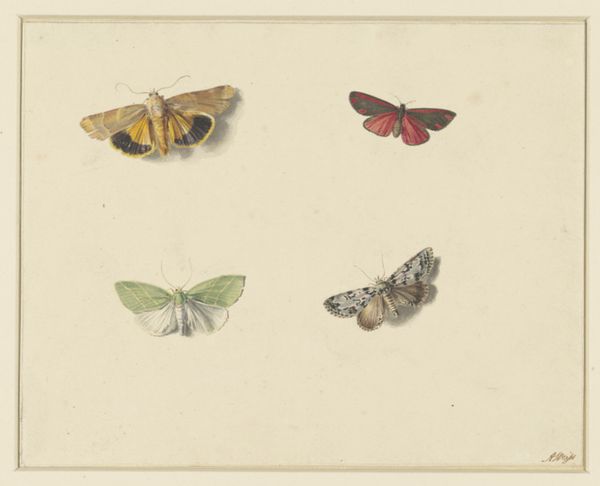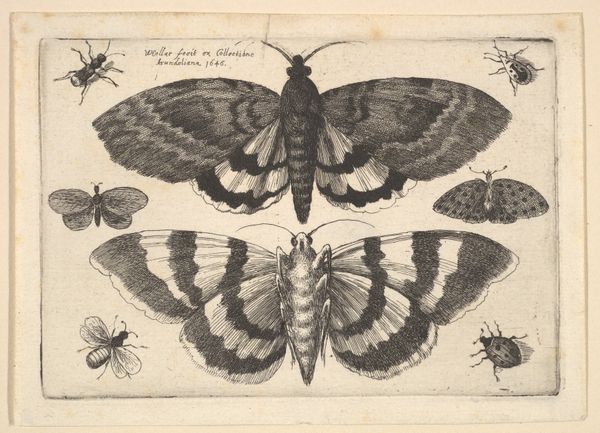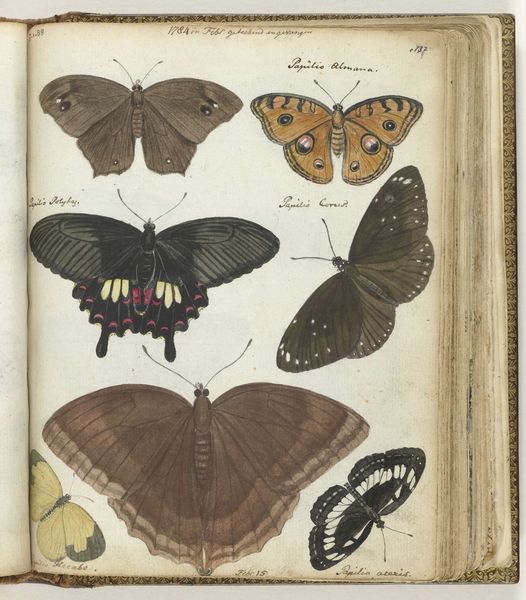
hand-colored-etching, print, watercolor, engraving
#
hand-colored-etching
# print
#
watercolor
#
coloured pencil
#
botanical drawing
#
line
#
watercolour illustration
#
engraving
#
botanical art
#
watercolor
Dimensions: 13 x 9 5/8 in. (33.02 x 24.45 cm) (sheet)
Copyright: Public Domain
Editor: This hand-colored etching from the early 18th century, titled "Blue Butterflies and Red Larva," presents such intriguing detail. There's a slightly unsettling tension between the delicate beauty of the butterflies and the rather spiky, intense-looking larva. How do you interpret this work? Curator: Well, considering the historical context, these types of natural history illustrations weren't just about documenting species. They were very much entangled with colonialism and the rise of scientific institutions. Think about who commissioned these works and how they were used. Editor: So, beyond the artistic skill, there’s a political dimension at play? Curator: Precisely! The meticulous detail of the butterflies and larva speaks to the European impulse to categorize and control the natural world. Prints like these fed into a burgeoning market of scientific knowledge and prestige, often gathered through exploiting colonial territories. Were these insects sourced locally? Editor: According to the gallery label, the artist was exploring a foreign place, maybe Suriname? How does knowing it was from outside of Europe shape things? Curator: Exactly. Consider how images of exotic flora and fauna reinforced a sense of European superiority and justified colonial expansion. The 'objective' scientific gaze was never neutral, it was always implicated in power structures. What purpose did these artworks really serve back then? Editor: That gives me a lot to think about. I was initially drawn to the beauty, but now I see how the image participated in larger systems. Curator: Right. And by recognizing that, we gain a fuller appreciation of its complex legacy. It shows that art's reception is inseparable from wider social and political forces.
Comments
minneapolisinstituteofart about 2 years ago
⋮
In January 1701 Merian wrote, "I set out into the forest to see if I could discover anything; I found this elegant red blossom on a tree; neither the name nor the properties of this tree are known to the inhabitants of this country." The butterfly is Caligo idomeneus (Linneaus), called an Owl Butterfly, because the large eye-spots on the undersides of the wings resembles the head of an owl when the wings are open. The larva illustrated is not that of an owl butterfly, but an unidentified species of silk moth. Merian also included a wasp, noting that wasps "are found everywhere in Suriname, even in the houses and in the fields…[They] sting any man or animal which comes near them and disturbs their activities."
Join the conversation
Join millions of artists and users on Artera today and experience the ultimate creative platform.

